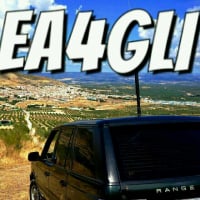Welcome to the FlexRadio Community! Please review the new Community Rules and other important new Community information on the Message Board.
Need the latest SmartSDR or 4O3A Genius Product Software?
SmartSDR v4.1.3 | SmartSDR v4.1.3 Release Notes
SmartSDR v3.10.15 | SmartSDR v3.10.15 Release Notes
The latest 4O3A Genius Product Software and Firmware
SmartSDR v4.1.3 | SmartSDR v4.1.3 Release Notes
SmartSDR v3.10.15 | SmartSDR v3.10.15 Release Notes
The latest 4O3A Genius Product Software and Firmware
If you are having a problem, please refer to the product documentation or check the Help Center for known solutions.
Need technical support from FlexRadio? It's as simple as Creating a HelpDesk ticket.
Need technical support from FlexRadio? It's as simple as Creating a HelpDesk ticket.
Anf - totally useless
Comments
-
yep fix this one too.
0 -
I don’t know how many of you have used the previous SDR sw, Power SDR. But it had a very effective ANF. Wish SmartSDR was as effective. NB does work well on pulse noise. TNF is very very good. WNB is an enigma, still don’t understand what conditions that make it useful.0
-
I use ANF regularly to notch out the idiots that tune on frequency--works fine. I used the WNB to eliminate noise from a timer. Software version 2.xx.0
-
I've seen it work on switching power supply and line noise. I don't have any of those anymore but it did work on those.0
-
The ANF does work for me, but it can distort the audio,,but it does what it should do.0
-
The ANF notches out a carrier but the carrier comes back as soon as someone transmits. It's modulated by the SSB signal.0
-
I find I can stop that from happening, it takes careful adjustment. I works well for me.0
-
Solved: sold my 6300. Bye!0
-
What adjustment are you refering to Bill? Moving the ANF slider? I can see an slight improvement on the ANF from earlier versions, but it is not even close to the PowerSDR performance. Maybe I am not using it properly...0
-
Yes, the slider, I can find a good spot for it and It works well, but still has some distortion in it.0
-
I guess I got spoiled with PowerSDR. I would leave it ON and not notice it at all.
Nowadays I hardly use it, I find the distortion worst than the offending tuner. A TNF is more useful. Problem is when I am using the Maestro... no TNF there.0 -
I hope they come back to it again. Maybe in V2, I remember it took about 5 years before they got the DSP in PSDR as good as it got.0
Leave a Comment
Categories
- All Categories
- 379 Community Topics
- 2.1K New Ideas
- 631 The Flea Market
- 8.2K Software
- 123 SmartSDR+
- 6.4K SmartSDR for Windows
- 184 SmartSDR for Maestro and M models
- 430 SmartSDR for Mac
- 271 SmartSDR for iOS
- 259 SmartSDR CAT
- 193 DAX
- 382 SmartSDR API
- 9.3K Radios and Accessories
- 39 Aurora
- 265 FLEX-8000 Signature Series
- 7.2K FLEX-6000 Signature Series
- 949 Maestro
- 56 FlexControl
- 866 FLEX Series (Legacy) Radios
- 925 Genius Products
- 463 Power Genius XL Amplifier
- 337 Tuner Genius XL
- 125 Antenna Genius
- 297 Shack Infrastructure
- 209 Networking
- 460 Remote Operation (SmartLink)
- 144 Contesting
- 788 Peripherals & Station Integration
- 139 Amateur Radio Interests
- 1K Third-Party Software





